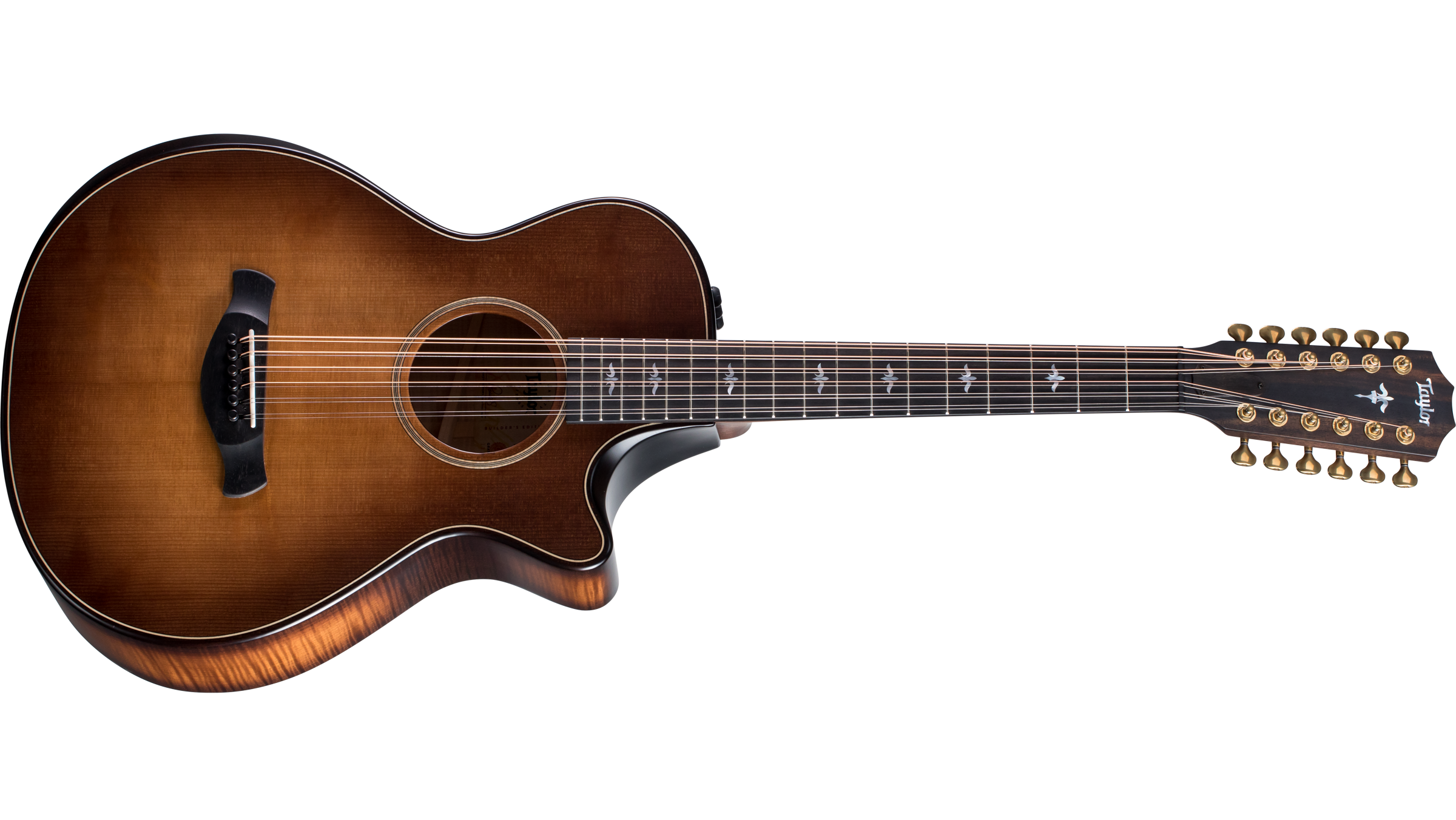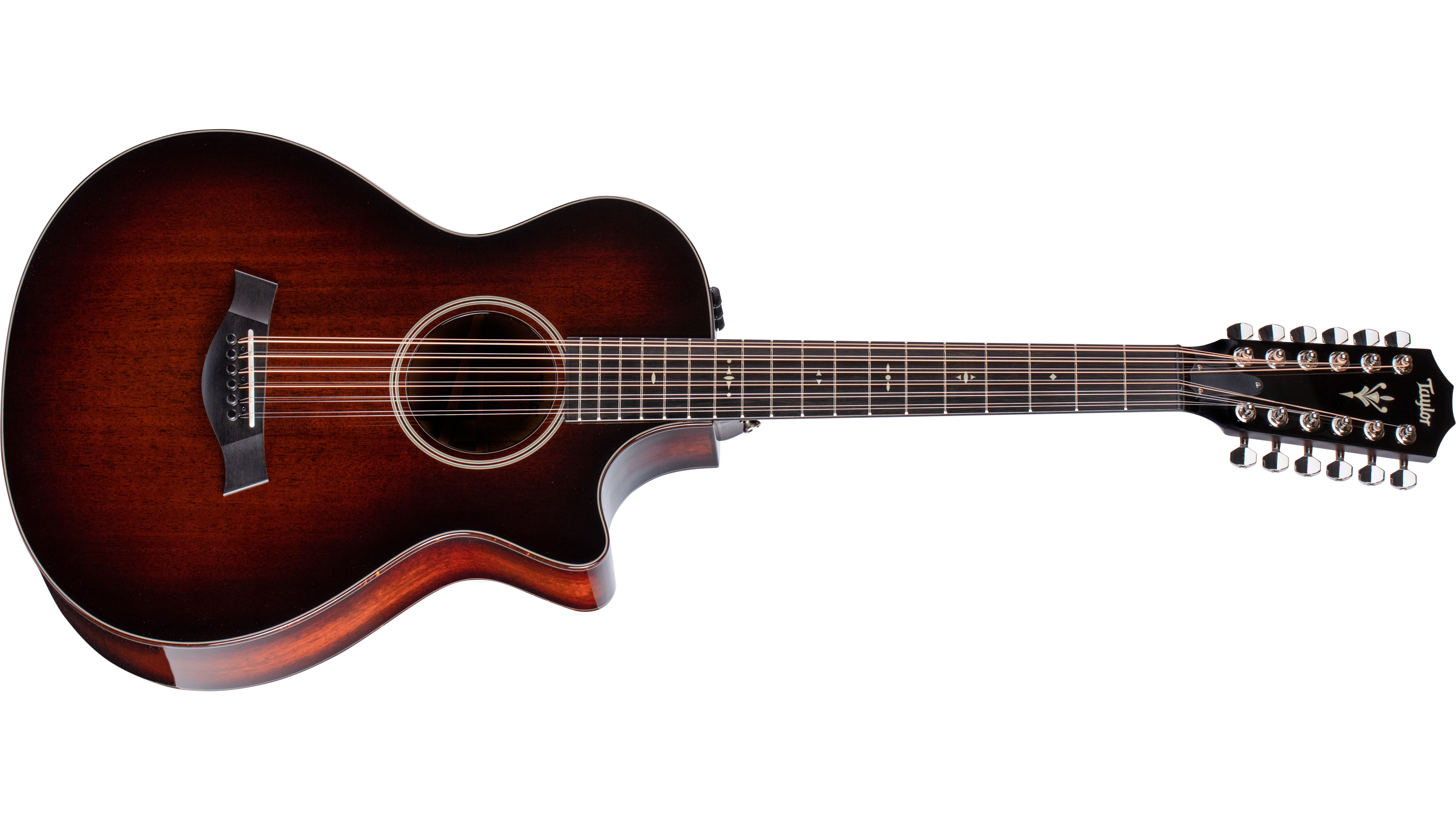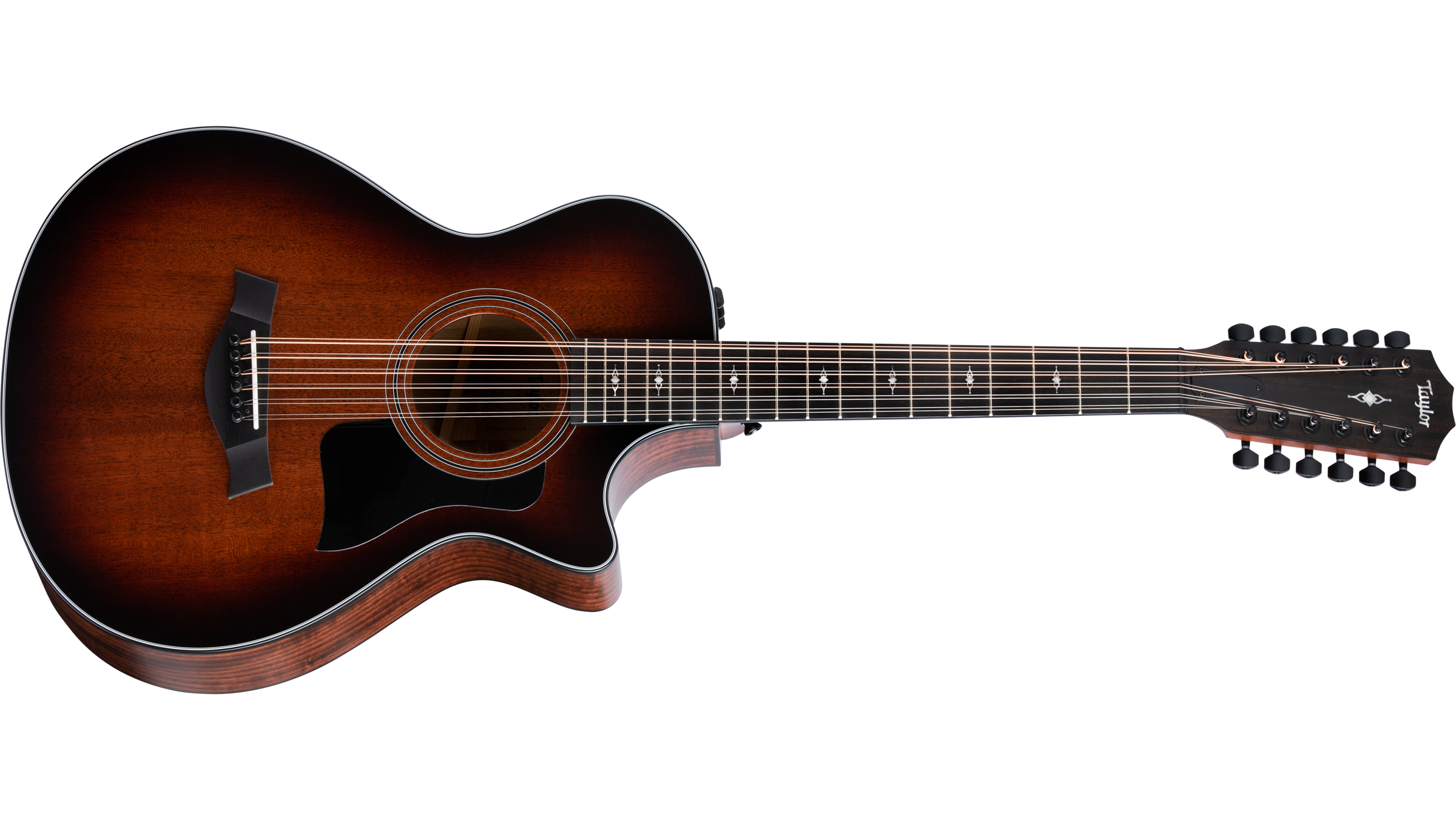A couple of weeks ago I took my Taylor GS Mini-e Koa guitar across the river to Chuck Levin’s Washington Music Center to have the electronic pickup system looked at. Levin’s is an institution in the Washington, D. C. music scene, having been in business since 1958.

Taylor GS Mini-e Koa
After dropping off my guitar, I wandered into the acoustic guitar room and was told by the sales to play anything I wanted, and take as much time as I liked. Those words are like crack to an addict when you’re a guitar player!
Levin’s carries many brands I’ve read about but never laid hands on. So, of course I played a number of guitars. After several different guitars, I found myself with a nifty 12-string guitar in hand.
My first new guitar was a 12-string. A Framus I bought in Germany when I was in college there. I still have it — 50 years later!

Framus 12-string guitar
I have since added an electric 12-string. But neither of them felt or played like this one!
It turns out this guitar is a Taylor “Builders Edition” 652ce. Taylor’s model numbering is explained thus: The first digit is the series number. Series are based on wood. The second digit specifies both whether it is 6- or 12-string, and whether the top wood is soft or hard. The third digit indicates the body shape (Taylor makes many), and the letters following indicate if the guitar has a cutaway and/or electronics. Thus, the 652ce is a maple-spruce paired 12-string with a soft (spruce) top and is a Grand Concert body shape. The guitar has a cutaway and an electronic pickup system. As a Builders Edition, it also receives some additional treatment, such as a beveled armrest, a beveled cutaway, and some “exclusive” Taylor tweaks: a 12-fret neck, two-string bridge pins, and something else different: It’s “reverse strung.” A typical 12-string has six pairs of strings, the fundamental string and an octave (the top two pairs of strings are identical). Twelve strings are typically strung with the octave string first (looking down from the playing perspective) and then the fundamental string. But Taylor puts the fundamental string first, then the octave string. I found this made playing it so much easier, because the down stroke of a strum plays the fundamental note first. The finish (there are two) I played and liked is called Wild Honey Burst.
And it’s beautiful!

Taylor Builder’s Edition 652ce 12-fret 12-string Grand Concert
All of this comes at a cost, of course. I actually happen to be in a position to purchase one at the moment, but it’s still a big decision.
Making the decision even tougher is that Taylor offers other 12-string guitars in the same size. I find the 562ce attractive, too. It’s mahogany (both top and body). Not being a Builders Edition, it costs less, but is plainer (less bling).

Taylor 562ce 12-fret, 12-string Grand Concert
There is also the 362ce, which is a mahogany top with Tasmanian Blackwood back and sides. It’s cheaper again than the 562ce.

Taylor 362ce 12-fret 12-string Grand Concert
If looks were all that mattered, I would be happy with the cheapest of the three. But sound and playability are the most important factors in a guitar priced in this range (and, in fact, I think I favor the looks ofd the 562ce). My biggest problem is that I haven’t been able to play either of the lower-cost Taylors.
The closest I’ve come is this “bake-off” video:
Decisions! Decisions! The more I look, read and explore, the more convinced I’m going to get one!
